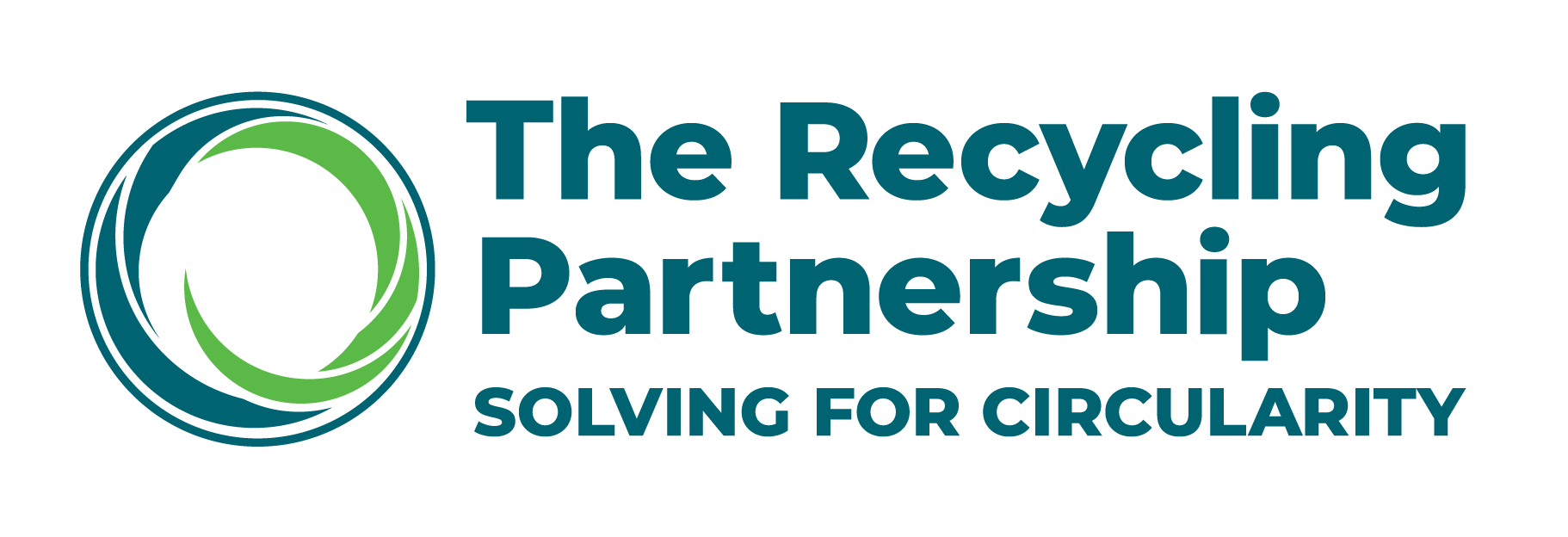Keefe Harrison
“We’re positive, focused, and serious about solution-building. I invite all who are committed to shaping a more vibrant future for our people, our environment, and our economy, to join us.”
As a leading national nonprofit working toward a modernized U.S. recycling system, The Recycling Partnership has been consistently activating impactful change in communities since 2014.
We view the U.S. recycling system as the foundation for designing a circular economy where products and packaging are increasingly recirculated through material supply chains with a goal of reducing greenhouse gases, enhancing the recycling economy, and diminishing the impacts of a take-make-waste society.
The Recycling Partnership’s strategy for the next 18 months will focus on implementing smarter systems across the value chain.
The current global pandemic has shined a light on just how loosely connected but highly dependent our recycling system is in the United States. We need to learn from this time to ensure that we build a resilient system supporting urban and rural communities alike – one that protects human health and supply chain disruptions in parallel. Systems change means implementing multiple steps in harmony.
In October of 2019, we unveiled our vision in the Bridge to Circularity report, which included three key findings and corresponding initiatives to address them:
1. The speed of packaging innovation has outpaced the capabilities of recycling infrastructure. The solution? The Recycling Partnership has built an initiative to document and drive discussion on the Pathway to Circularity.
2. In its current form, the U.S. recycling system cannot deliver the supply of recycled materials demanded by the commitments of the industry. The solution: We must continue to invest in unlocking supply from all U.S. homes.
3. Fundamental underlying challenges require building, in parallel, a sustainably-funded and responsive future system. The solution? Advocate for transformative policy to ensure sustainable funding that creates and sustains the System of the Future.
The COVID-19 crisis has been painfully disruptive to people’s lives and the normal way our society and economy work, including how materials are managed. While the crisis may be temporary, the impact it will have on our lives going forward is undeniable and, in many ways, unknown at this time. One of the things I do hope we all carry forward is the perspective and heightened awareness of how we, as humans collectively, impact the Earth and the responsibility we have to lighten that burden. The good work of The Recycling Partnership, to create a circular economy and a healthy U.S. recycling system will resume and be more important than ever. With the active involvement of our growing circle of funders and stakeholders we will look forward to doing our part to help the recovery.
The crisis has underscored some things we already knew about the system, pointing us to the challenges that will endure after the crisis has ended.
• We live in a disaggregated recycling system, where the many individual decisions of communities, Materials Recovery Facilities (MRFs), and other stakeholders drive the overall shape of that system. Communities and MRFs react to conditions and opportunities on their own terms. To scale change influencing their decision making is key – including providing adequate resources and technical assistance that support the best choices for the overall system.
• Recycling is an essential supply chain in the U.S. economy. Almost immediately as the crisis began to unfold, we saw concern about loss of required feedstock to make many of the products that are needed to help households weather the pandemic. When the crisis goes away, those same industries will still need a reliable supply to feed the manufacturing investments that represent the face of the circular economy.
• Ample evidence points to the huge system effects from the use of automation in collection and processing infrastructure. The crisis has pointed to yet another highly beneficial aspect of automation — worker safety, in addition to the long-term value of automation to drive system efficiency. The routine strategies used by The Recycling Partnership to capture more materials at lower cost also improves the resiliency of the system in a crisis situation.
As we navigate the impacts of COVID-19, one of the tasks ahead is to rebuild a strong U.S. economy in a way that supports people and the planet. Recycling will have a central role to play in that process. As documented in The Recycling Partnership’s 2020 State of Curbside Recycling report, curbside recycling delivers an estimated 12 million tons of recyclable material each year to the circular economy. There is no reason that we can’t double that number through consequential investment, smart policy, and strategic interventions into the system.
People make the system run and are the hub of change. That’s why I’m honored to work side-by-side with The Recycling Partnership team, our community partners, other aligned organizations, and our funding partners. Together we’re a can-do group, tackling challenges head on, and finding real solutions to improve the U.S. recycling system and move us to a circular economy. We’re positive, focused, and serious about solution-building. I invite all who are committed to shaping a more vibrant future for our people, our environment, and our economy, to join us.
—

Keefe Harrison

